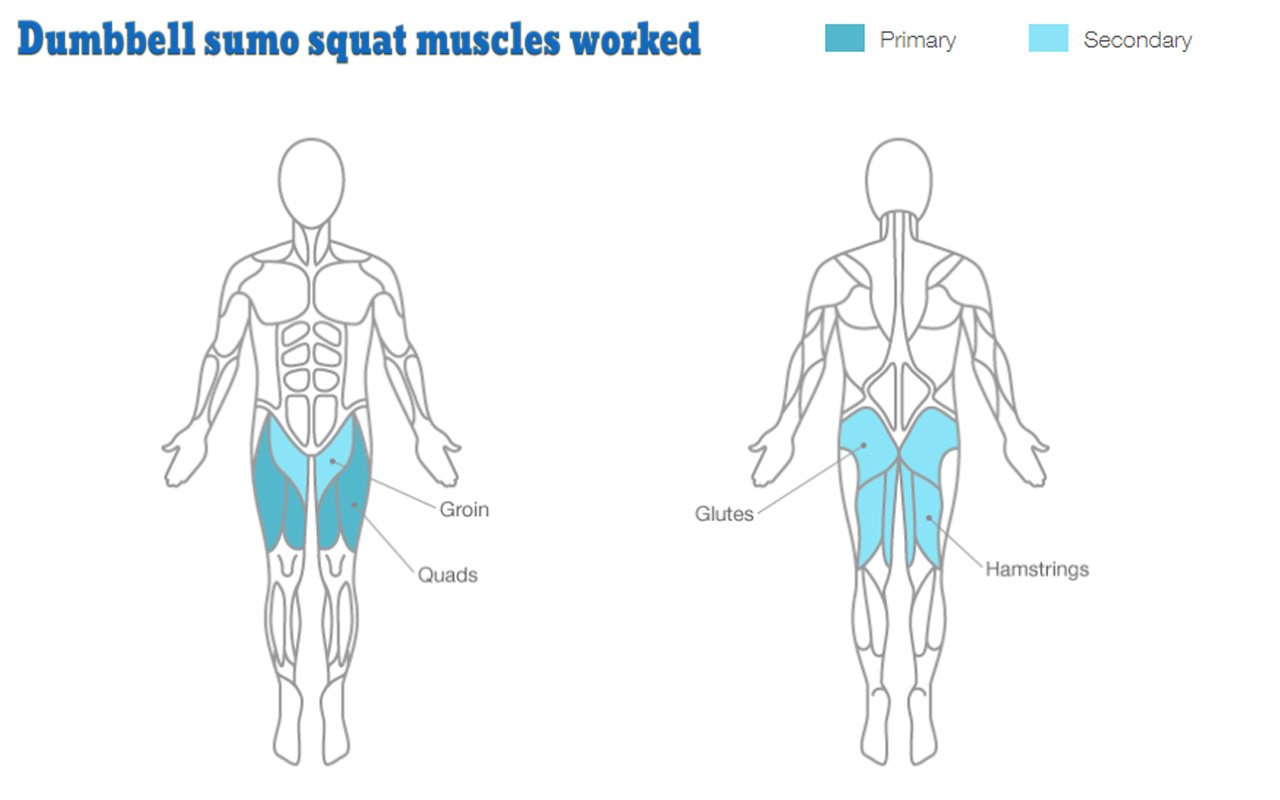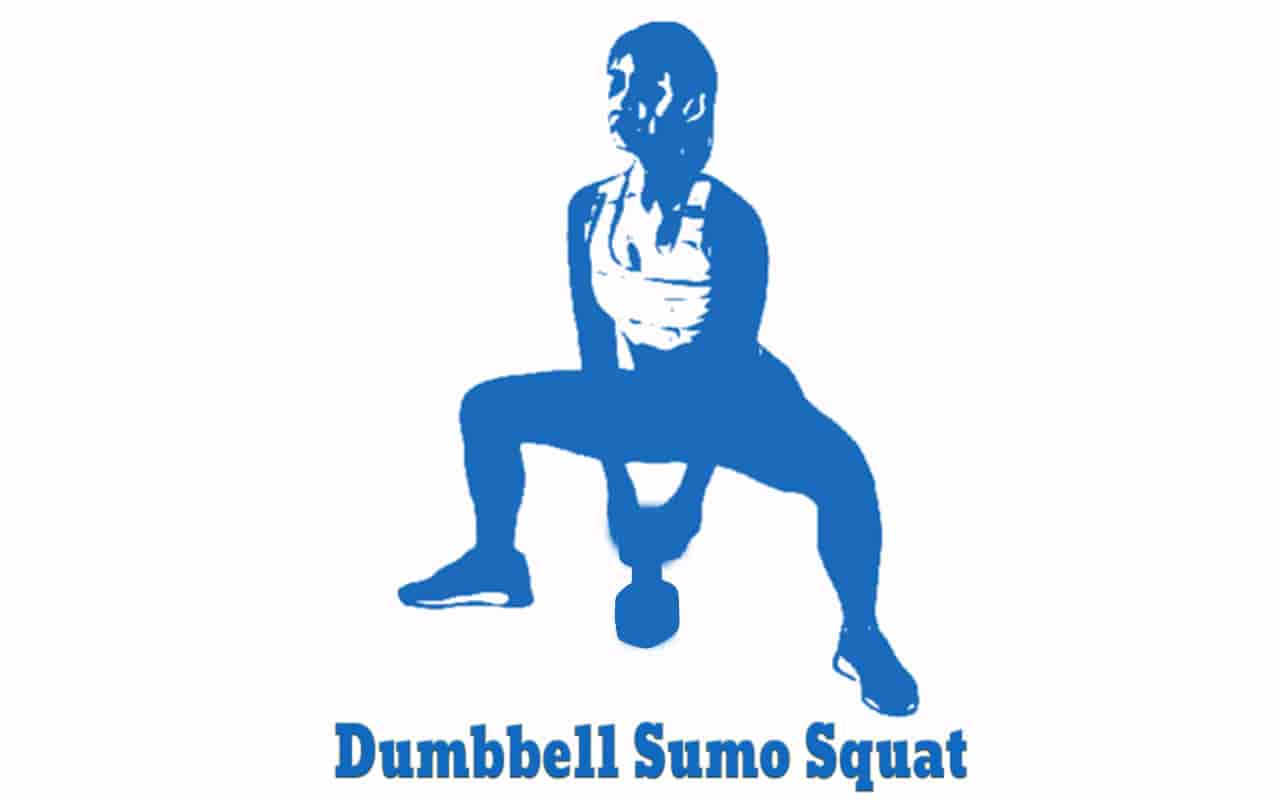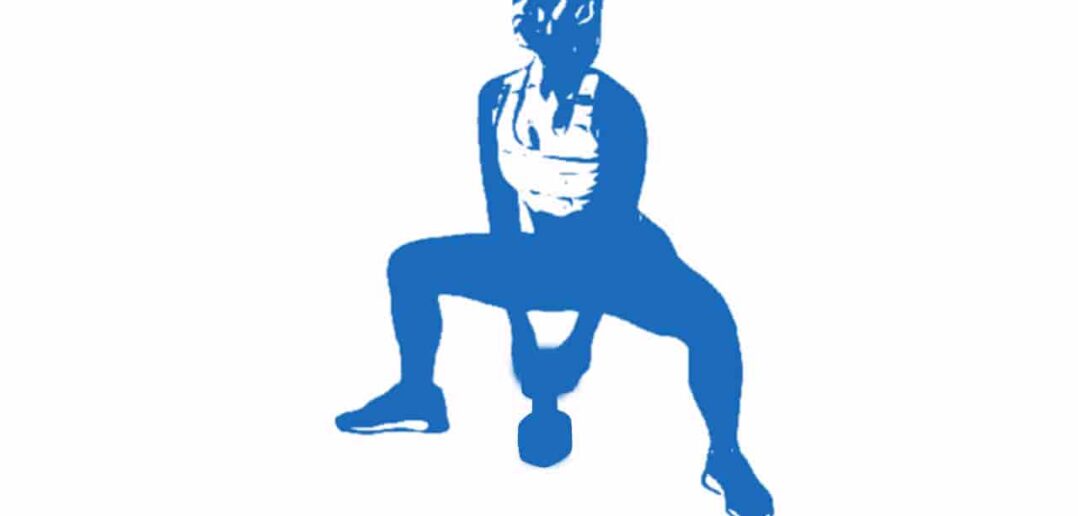Dumbbell sumo squats are a great way to tone your legs, improve your balance, and increase your flexibility.
Squats may not be your favorite exercise but they can help strengthen your quads and glutes. A set of dumbbells can not only strengthen your tush, but also your arms!
Traditional sumo squats require the use of a barbell. You can also use dumbbells and kettlebells.
A traditional squat allows you to keep your feet pointed straight ahead, or slightly angled out. However, a sumo-squat requires that your feet are turned out and your stance is wider.
Your muscles will be challenged because your foot position can change your support base.
Table of Contents
Exercise details
- Dynamic stabilizers: Hamstrings, Gastrocnemius
- Force: Push
- Mechanics: Compound
- Synergists: Gluteus Maximus, Pectineus, Gracilis, Adductor Magnus, Adductor Longus, Adductor Brevis, Soleus
- Target muscle: Quadriceps (Rectus Femoris, Vastus Lateralis, Vastus Medialis, Vastus Intermedius)
How to do Dumbbell sumo squats the right way
Do dumbbell sumo-squats if you want stronger legs. This exercise will help you target your quads and hamstrings as well as your glutes.
It’s crucial that you follow the correct procedure. You could injure yourself. Here are the correct dumbbell sumo squats:
- Stand straight up and hold a dumbbell in each hand at the base. With your knees bent slightly, move your legs so they are not more than shoulder-width apart.
- Your toes should face out. During the exercise, your arms should remain stationary. This is the starting point.
- Slowly bend your knees and lower your legs so that your thighs touch the ground. This is the eccentric part. Inhale.
- To bring your body back to its original position, press firmly with the heel of your foot while you exhale.
Continue repeating until you reach the maximum number of repetitions.
Benefits of a dumbbell sumo squat
The sumo squat with dumbbells may be one of the best exercises for developing strength and a massive lower half. It targets the quadriceps, glutes, hamstrings, and adductors in one movement and you can use it to add size to your legs or just to load up your backside for a more well-rounded physique.

Combinations like the sumo-squat and its variations such as the dumbbell sumo-squats are a great way to strengthen the lower body and target harder to work muscles. You can improve your balance and protect your hips during intense or heavy activities by adding exercises that target your inner thighs.
You can target your quads and glutes with dumbbell sumo squats. It can be done using a variety of weights to make it challenging enough for everyone.
This is a very popular exercise for the lower body. It involves one dumbbell that is held in front of your legs.
This position is wider than the shoulder, so it places more strain on the glutes and hamstrings. However, the exercise still benefits the quads, core, and upper body.
This is part of the lower body portion of a workout. It can be done for moderate to high reps, with at least 8-12 repetitions per set. Even though the equipment is relatively light, it’s great for strengthening the hamstrings and glutes.
Promotes mobility and flexibility in the hips, adductors, and legs. Encourages squatting with good form, and a straight torso. Hold the dumbbells in front of your chest, with your feet spread wide.
Lower your hips and bend your knees. Your thighs should be parallel to the ground. Keep your weight back in the heels. To get the best out of the exercise, raise your legs straightening them completely.
The 4-3-1 Dumbbell Sumo Squat Workout
The top 10 best butt-building exercises include the 4-3-1 dumbbell sumo squat.
This number describes the pace at which you should exercise. The first number is the time it takes to lower the weight.
The second number indicates how long you should stop at the bottom or midpoint of the exercise.
The third number indicates how quickly you should lift weights or return to your starting position.
You will lower your weight for four seconds, then pause for three seconds at the bottom and then come back up in one second. This will ensure that each rep lasts at least seven seconds. This is two to three times more than what most people do in the gym.
The extended time under tension can be a great way of stimulating new muscle growth, while you are using lighter loads than usual.
It’s especially difficult to maintain that position at the bottom with your hips fully extended and your glutes fully contracted.
These are the four key performance points to maximize your glutes.
- Be careful about your weight
- Begin the movement by leaning forward with your torso. Keep that position throughout.
- Get your feet a little loose
- Keep the dumbbell at your waist.
It is recommended to do 3 sets of 5-6 reps, with a one-minute rest in between. This protocol will give you the sumo ass you have always wanted.
Variations
The sumo squat is a type of squat that is characterized by the feet being placed wider than shoulder-width apart. The name ‘sumo’ comes from the resemblance this position has to how sumo wrestlers stand when they are preparing for their match.
This type of squat is a little different than the normal squat in that it requires you to have a wider stance and requires you to have your toes pointed more outward.
Here are two variations of sumo squats with dumbbells that can be used to target your glutes, quads, or hamstrings. These moves should be challenging but don’t be afraid to go light and perfect your form before adding weight or loading it into a barbell.
Traditional barbell squat
You perform this exact same way as a sumo-squat, except that your feet are closer together (shoulder width) and your hands are also closer to the shoulders (shoulder width).
This is how you do it: Grab a barbell with a grip that is slightly wider than your shoulders. To make the barbell reach your shoulders, you need to swing your elbows forward so that the barbell is under your elbows.
Throughout the movement, keep your elbows straight forward. Keep your weight on your heels and squat.
A barbell is a better option than dumbbells. It spreads the weight evenly across your shoulders, arms, and back. For those who have difficulty lifting heavy dumbbells, this is a great place for them to begin.
- Grab a barbell with heavyweights loaded and place it on your shoulders. Your shoulders should be pulled back so the bar can rest.
- The bar should be held in an overhand grip, with your fingers and palms facing forwards.
- Lower your body by bending at your knees and pushing your hips back.
- Then, pause and then return to your starting position. Keep your core straight, your lower back arched, and your torso upright.
Single-Leg Squat with Dumbbells
The dumbbell single-leg, dumbbell squat exercises the lower body. It focuses on developing the quads and hamstrings and the glutes. This exercise uses all the muscles of your legs and other support muscles, such as the erector spinae or abs.
You will be holding onto two dumbbells, your arms extended at your sides.
- Stand about 2 to 3 feet in front of a flat bench, with your back facing the bench. Place the dumbells in front of you on the ground. Your feet should be at shoulder width.
- Bend your knees and grab the dumbbells to place them beside you.
- Move one foot back, so your toe rests on the flat bench. The other foot should remain stationary in front. Your head should be up as looking down can cause you to lose balance. Also, keep your back straight. Ensure your back is straight while doing this exercise.
- Inhale slowly and lower your leg so that your thigh is parallel with the floor. Your knee should now be above your toes. Your chest should reach directly to the middle of your thigh.
- Start by aligning your chest, hips, and quadriceps. Then exhale and raise your leg to the original position.


